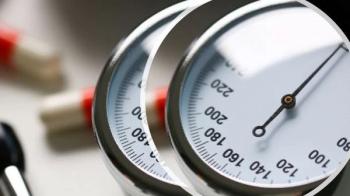
Managing Peripheral Vascular Disease: A Short Summary of a Long History
A look back at a decade of advances in management of peripheral vascular disease prompted this short summary of big changes.
Recently I read an excellent review article from 2014 in Nature Reviews/Cardiology1and it prompted me to revisit how we manage peripheral vascular disease (PVD). The author’s perspective and intent were evident in the title, “10 years of breakthroughs in peripheral vascular disease.” It was a well-guided trip down memory lane that touched on every significant change in the way we have approached PVD over time and brought as almost to the present. The author’s literature review covers a decade of breakthroughs that have impacted quality and outcomes in PVD. It is a fast read and I commend it highly to primary care physicians who see these patients every day.
A synopsis may pique your interest.
It used to be that aspirin was the “be all and end all” of PVD management.1 But 2 studies (2008,2 20103) fostered change. Cardiovascular endpoints-and in the 2010 study, lower extremity amputations as well3-were no different between aspirin and placebo groups. The new approach was to rely on clopidogrel.4 In fact, studies that added aspirin to clopidogrel saw no impact on outcomes.4 Other reviews supported the clopidogrel approach.5,6 In fact, of the multiple agents and combinations studied at the time, clopidogrel monotherapy had the best benefit-harm profile.6 Warfarin does not have a role in PVD treatment unless other indications (eg, atrial fibrillation) are present.
The screening test of choice for PVD-the ankle-brachial index (ABI)-is non-invasive. It is recommended in patients age ≥65 years, aged 50 to 64 years with atherosclerotic risk factors (smoking) or family history, age <50 years with diabetes and 1 additional risk factor, or known atherosclerotic disease in another vascular bed with risk factors, and in those individuals with typical or atypical limb symptoms such as weakness, paresthesias, exertional discomfort, and/or slow healing ulcers.7
The review looked at other therapeutic updates for PVD including the role of exercise, importance of blood pressure control, and the benefits of cilostazol for PVD in individuals with claudication.
Supervised exercise training helps those with PVD and intermittent claudication.5 The Framingham data demonstrated that hypertension increased claudication incidence 2-fold in men and 4-fold in women.7 A focused effort to bring blood pressures below target should now be standard of care. Renin-angiotensin-aldosterone agents are first-line.5 Ramipril as an antihypertensive may be associated with additional risk reductions in this group.5 Cilostazol increases walking distance and can be used in individuals with PVD and intermittent claudication without LV dysfunction.8
The last 10+ years plus have added substantially to the armamentarium directed at PVD. Primary care will continue to play a major role in managing these patients, including their common comorbidities.
References:
1. Creager MA.
2. Fowkes FG, Price JF, Stewart MC, et al.
3. Beich J, MacCuish A, Campbell J, et al.
4. Jones WS, Schmit KM, Vemulapalli S, et al.
5. Simmons A, Steffen K, Sanders S.
6. Katsanos K, Spiliopoulos S, Saha P, et al.
7. Tattersall MC, Johnson HM, Mason PJ.
8. Bedenis R, Stewart M, Cleanthis M, et. al.
Newsletter
Enhance your clinical practice with the Patient Care newsletter, offering the latest evidence-based guidelines, diagnostic insights, and treatment strategies for primary care physicians.






















































































































































































































































































